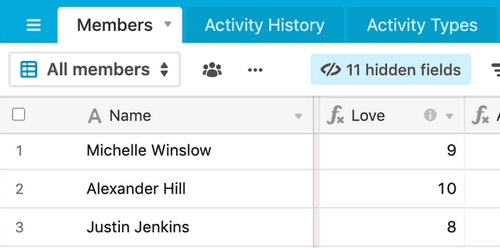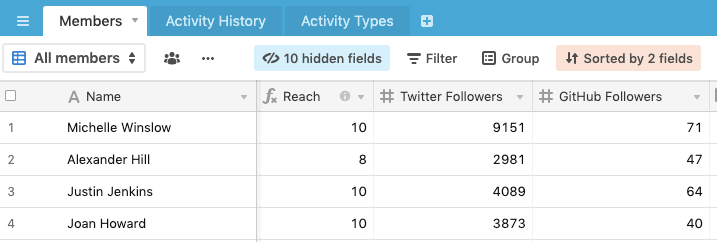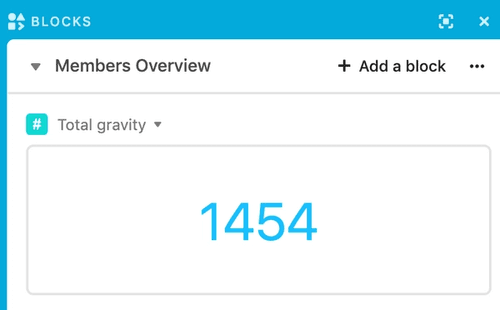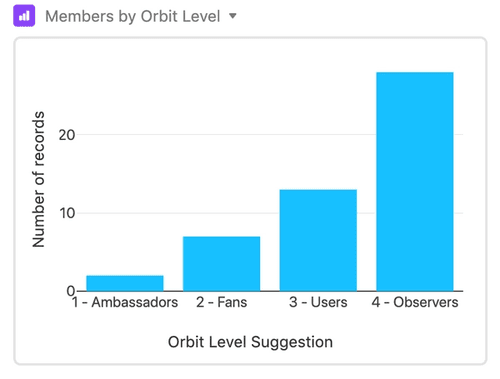Introducing the Orbit Model Airtable Template
Measure the Love and Reach of your community and visualize the results.

Patrick Woods
March 18, 2020

Since releasing the Orbit Model as a community-centric alternative to the funnel, we've received lots of positive and constructive feedback online and off. But the main question people ask is this: “This sounds great, but how do I actually use the Orbit Model?”
To help community managers, DevRel teams, and anyone trying to track the health and growth of their community, we're sharing two big updates:
- We overhauled the GitHub repository with more detail and examples.
- We created an Airtable template for tracking activity and calculating metrics.
View and download the template ››
The template based on the principles of the Orbit Model, and tracks a community’s Love, Reach, Gravity, and Activities over time.
Have ideas or feedback? Give us a shout on twitter @OrbitModel, or send an email to model@orbit.love.
Get started
This post assumes high-level knowledge of the Orbit Model, so start by reviewing the GitHub repository. Even if you've read it before, you'll see a lot of updates.
Next, load up the template. Explore the member data and the visualiation in the Blocks on the rght.
Finally, to add data and explore the formulas, copy the base by clicking the link at the top right of the page:

Key Concepts
The Orbit Model contains four fundamental concepts: Love, Reach, Gravity and Orbit Level.
Love
Love is a member's level of engagement and activity in the community. Someone with high love is highly active, capable, and experienced. They're willing and able to play key roles in the community like contributing, moderating, and organizing.
A member's love is inferred by the quantity and quality of activities complete they've completed.
In the template: Love is calculated by measuring the highest-value activity a member has completed, as entered in the Activity History table.

Activities are the tangible expression of a member's love. They can be tracked over time and should be weighted based on how impactful they are for the community. Hosting a meetup, for example, is more impactful than starring your repository, and should be quantified as such.
In the template: Activites are recorded in the Activity History table. The value of each activity is maintained in the Activity Types table, which is where you can add or customize the template's pre-assigned activities.

Reach
Reach is a measure of a community member’s influence, and takes into account a member's reputation and sphere of influence. Individuals with high reach will attract others to join them as they journey through your community.
In the template: Reach is calculated by manual entry of Twitter and GitHub followers in the Members table.

Gravity
Gravity is the attractive force of a community that acts to retain existing members and pull in new ones. Gravity drives referrals, awareness, word-of-mouth, brand vibes, and more.
The goal of the Orbit Model is to increase the gravity of your community.
Note that this goal is different from other models, like the sales and marketing funnel, which seek to drive all members to the same binary outcome.
In the template: Gravity is calculated automatically based on the sum of the product each member's love and reach, in other words:
Gravity = Sum(Love * Reach) for each member
Orbit Levels
Orbit levels allow teams to segment their community and to offer the right opportunity to the right person at the right time.
Orbit level is based on love, and specifically, the highest-value activity a community member has completed. While love and reach are values that are measurable, orbit level is a choice that you make for each member based on where you believe they can best serve (and will be best served by) the community.
In the template: The template calculates a Suggested Orbit Level based on the Love of each member. To manually tweak your levels, just add a new column, copy the data from “Suggested Orbit Level,” and overwrite any data that needs to be customized.

Orbiting together
We hope this template clarifies some of the questions about how to implement the Orbit Model. Every community comes with its own unique challenges, so we’re eager to hear how people are applying the model.
This template is very much version 0.5, so we’d love to hear from you about what makes sense and what’s confusing.
If you’d like to work with us directly on improving the next version of this template, give us a shout on twitter @OrbitModel, or send an email to model@orbit.love.
You might also like:
- Why Orbit is Better Than Funnel for Developer Relations
- DevRel teams need tools and models created specifically for our discipline, and not just those adopted from other fields.
- Slack vs Discord vs Discourse: The best tool for your community
- An in-depth comparison of 3 top community platforms across dozens of factors.
- How we use Orbit to build Orbit
- A guide to how we use our product to build our community.


